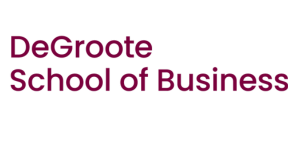Navigating the World of Dress Codes
Some advice from Cynthia Bishop, Manager, Career and Professional Development
Business dress codes are evolving and leaving many of us with questions as it relates to what to wear. Ambiguity is definitely not easy to navigate when we are wanting to feel confident and put our best selves forward. The workplace and associated events have always come with spoken and unspoken rules of what is expected in terms of dress and that certainly hasn’t changed but those rules are much less rigid. The world of work is becoming much more accepting of individuals expressing who they are through their attire rather than conforming to a set uniform. Creating much more inclusive work environments open to dress that is reflective of personal style, identity and culture.
The best advice I can share is to ensure your approach to navigating dress codes is intentional versus simply misjudging the dress code for the occasion or setting. Seek to align with the level of the dress code category rather than trying to morph your wardrobe to mimic others. Authenticity exudes confidence!
In some cases, you will receive dress code expectations prior to starting a role or attending an event which makes attire decision making much simpler. What happens if the expectations are not shared? Don’t be shy – ask the question. Or take a look around the office – what are you observing? Don’t forget to look for nuances in how and when individuals change the formality of their attire. At DeGroote, we strive to share dress code expectations for all our activities, events and functions. If we missed including this information, please reach out to recruit.degroote@mcmaster.ca and we will ensure it is updated promptly.
Imagine this situation: You’ve received the following message from your hiring manager the week before you are scheduled to start your summer internship:
“We are very much looking forward to welcoming you to the team on Monday. We have scheduled various onboarding activities for you throughout the day including meetings with the team and HR, tech set up appointment with IT and a corporate tour. To help you prepare for your first day, here are a few answers to frequently asked questions: our office dress code is [insert level here]…”
What does it mean if [insert level here] indicates Business Formal, Business Professional, Business Casual or Casual?
These categories all find themselves on a spectrum with no clear delineation between them. They are no longer defined by a specific outfit.

Business Formal is considered the most formal level of dress category in a business setting. In North America, Business Formal is typically characterized by the “business suit” but not exclusively.
Decreasing on the scale of formality are Business Professional, Business Casual and Casual – in that order.
The career team has put together a presentation highlighting elements to consider while navigating dress codes and to help support you in feeling confident in making the best decisions for you. Remember, as you navigate job search and the world of work, your attire does not replace professional competencies including work ethic, quality of work, skills & expertise.

